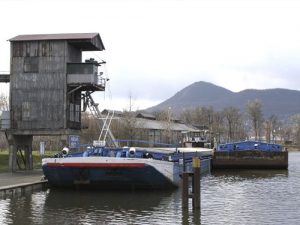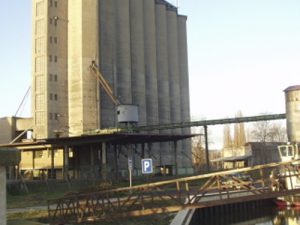This case study discusses a cooperative called Brassica which consists of 48 farmers that is focused on the stor- age of different types of crops – specifically wheat, barley, corn, rape seed and white and yellow mustard (sinapis). Brassica owns two separate grain silos and three large-scale warehouses. The cooperative stores the harvested crops, treats them, and simultaneously grades and segments them in accordance with different quality parameters.
Area: Together, the 48 co-op members own and manage approximately 15 000 hectares of farmland
Farms are located in northern Bohemia (Litoměřice, Roudnice nad Labem, Teplice, Slaný and Louny) and are primarily focused on plant production.
Brassica marketing co-op was founded by 15 members in 1999.
Historical roots of marketing co-ops in the Czech Republic can be traced back to the beginning of the 19th century. Despite huge economic and political changes, it is still the best way to promote commodity marketing.
Brassica deals with storage, crop treatment, brokering, cereal and oil crop wholesale, rental of storage capacity to non-member organizations, laboratory quality analyses, and freight handling. The company is regularly audited by the official accredited authority. Everyone involved in agricultural realises how important it is to not to “only” grow a top-quality product, but to sell the products effectively too. This was the main idea of the 15 private farmers that established Brassica in 1999. One year later, it obtained its first grain elevator by public auction. This is a classic concrete silo that was constructed in the 1960s, with a total capacity of 20,500 tonnes. The enormous floods in 2002 were a crucial endurance test for the facility and unfortunately caused many problems further down the line. The facilities were swamped by water for five weeks and repairs cost millions of Czech crowns. However, with enormous effort on the part of the co-op members and employees, the building was eventually repaired and reestab- lished. Since then, Brassica has flourished, with increasing numbers of the members having enlarged their farmland.
The cooperative invested in technologies for post-harvest lines, new driers, seed cleaners, and strain scales. The entire silo is fully automatized. In 2010, Brassica acquired a second silo, so the storage capacity was upgraded to 30 thousand tonnes. The expansion enabled the development of new services for trading partners such as handling of commodities, the possibility to rent space etc. In 2012, a new four-meter flood wall was built around whole facil- ity to prevent flooding in the future.
Brassica ́s great advantage is its unique geographical position for processing commodities. The headquarters of the cooperative are situated on the major route between Prague and Dresden (the rest of the German market and indeed the western Europe market can be accessed from there). The facilities are situated directly on the left bank of the Elbe river, in the vicinity of the shipping port. Both silos have elevators and are well connected allowing loading to take place directly onto the barges. The goods can also be dispatched directly onto freight trains via a railway siding. Quick and smooth transfers are vital and are operated via three revenue baskets with an aggregate capacity of 140 tonnes per hour. Transfer of the goods is possible in four different positions at an average speed of up to 240 tonnes per hour.
The most recent change to the business was the purchase of two large-capacity warehouses close to Brassica’s facilities. This acquisition opened a space for another storage development and now Brassica has 35,000 tonnes of available warehouse capacity.
The management is supervised by the Board of Directors which is elected for three years and made up of the Chair- person and the Vice-Chairperson plus five other members. Financial management is supervised by the Audit Board which is composed of three members who regularly report back during meetings with the members.
Advice/Recommendation
"If you are looking to support the wider co-operative movement, you could join the ranks of farmers who choose to invest some of their profits in marketing investments via advertisement, farmers associations, and webpages etc.
Cooperatives typically finance their start-up needs with a combination of loans and investments from the co-op members. Profit is either reinvestment into infrastructure or distributed to members in the form of capital credits, which are essentially dividends paid on a member’s investment into the cooperative. Past experiences have shown that the group approach works only when the members of the group have the same targets. The quality of stored products is a key part in our cooperative and steps have to be taken to reduce wastage. For Brassica, it is always better to collectively purchase inputs like equipment so that the cost for everyone is reduced. Company management should be proactive enough to find new marketing opportunities and to make use of them for further growth. Studying market trends is necessary to make good purchasing decisions. Transparency in activities, responsibility, and cash transactions must be clear for all co-op members. Regular monitoring of progress and achievements is necessary. The main challenge is to make Brassica more cooperative and financially self-sustainable by increasing the number of members and their contribution to the shared capital. Leadership and understanding between the co-op members are vital for success. If there is understanding between the members then it will be easy for planning our future activities."
Queries/Questions
- Have you ever thought about sharing with other farmers a step (e.g. machine man- agement or storage) in the workflow of your farm business? Do you think a cooper- ative would be the best way to do this?



 Čeština
Čeština  English
English  Français
Français  Deutsch
Deutsch  Italiano
Italiano  Slovenščina
Slovenščina  Español
Español 




